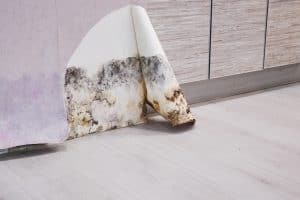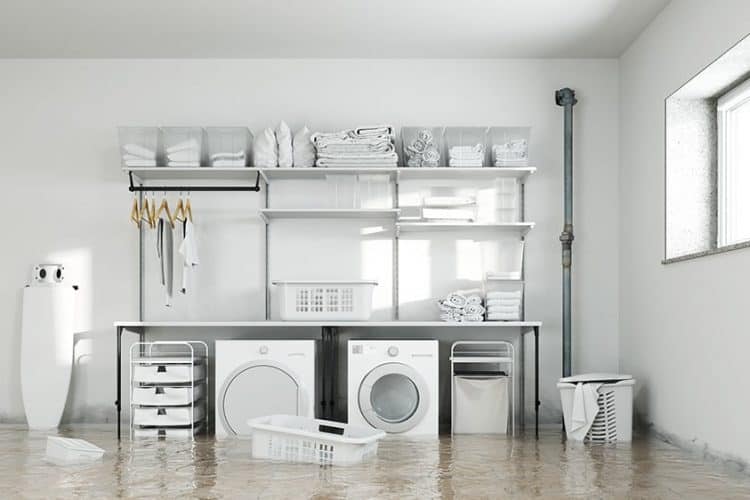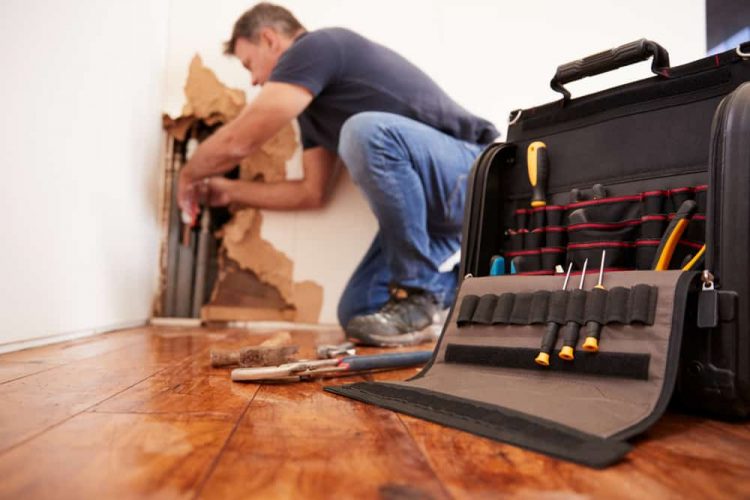
Mold damage might not be an obvious threat at first glance, but its impact on health and property can be far-reaching. As homeowners, we often focus on protecting our houses from visible perils like fire and water damage, but it’s crucial not to overlook the silent danger that mold can pose.
In this article, we delve into the hidden dangers of mold damage, shedding light on its health risks and exploring effective remediation measures to safeguard our homes and well-being.
Our goal is to equip you with knowledge and strategies to handle mold issues proactively and effectively, ultimately ensuring the health and well-being of your family and the longevity of your home.
The Impact of Mold Damage on Health
Mold is a type of fungus that thrives in damp and humid environments, making our homes susceptible to its growth. While mold plays a vital role in nature by breaking down organic matter, it can become a serious concern when it infiltrates indoor spaces and begins to grow, especially when left unaddressed. The health risks associated with mold exposure can vary depending on the type of mold, the extent of contamination, and individual susceptibility.
- Respiratory Issues: One of mold exposure’s most common health effects is respiratory problems. Mold releases tiny spores into the air, and when inhaled, they can trigger various respiratory issues, especially in individuals with allergies or asthma. Symptoms may include coughing, wheezing, throat irritation, nasal congestion, and exacerbation of existing respiratory conditions.
- Allergic Reactions: Mold spores are common indoor allergens, leading to allergic reactions in susceptible individuals. Allergy symptoms may range from mild to severe, including sneezing, skin rashes, watery or itchy eyes, and respiratory distress. Prolonged exposure to mold can worsen these symptoms and even cause the development of new allergies.
- Immunological Responses: In some cases, mold exposure can also lead to immunological responses, impacting the body’s ability to fight off infections. Individuals with compromised immune systems, such as those undergoing medical treatments or with underlying health conditions, are particularly at risk.
- Aggravation of Pre-existing Conditions: Mold exposure can exacerbate pre-existing health conditions, such as chronic respiratory illnesses, allergies, or skin conditions. This can lead to a decline in overall health and quality of life.
- Toxic Mold: Certain types of mold, such as Stachybotrys chartarum (often commonly referred to as “black mold”), can produce toxic byproducts called mycotoxins. S. chartarum is a relatively rare species, but it feeds on cellulose-rich building materials such as wood and drywall, which is why it is is often affiliated with indoor mold growth after severe water damage events. It’s important to note that just because mold is black in color, it does not always mean it is S. chartarum. Similarly, just because mold is growing in a building, it does not always mean mycotoxins are present. Prolonged and repeated exposure to certain mold toxins can lead to more adverse health problems in certain individuals. However, there is no evidence proving that inhalation exposure to “black mold” causes other serious health issues beyond the allergic and respiratory reactions.
Common Sources of Damage Caused by Mold
Mold can flourish in environments with moisture and organic materials, and it’s crucial to identify the common sources of mold growth to prevent its harmful effects on health and property. These sources include water leaks and intrusions, flooding, high humidity levels, poor ventilation, damp basements and crawl spaces, condensation on cold surfaces, wet or water-damaged materials, and a lack of maintenance.
Recognizing Mold in Your Home
Recognizing mold damage in your home is vital for taking prompt action and mitigating potential health risks. Look out for visible mold growth, musty odors, water stains, peeling or bulging paint, allergic or respiratory symptoms, high humidity, and deteriorating materials.
Areas with previous water damage are particularly susceptible. If you suspect mold, seek professional inspections to identify hidden growth accurately. Swift and effective mold remediation is crucial to prevent further damage and safeguard the health of your household.
The Process of Mold Remediation
Property restoration for mold is a complex and specialized process aimed at safely and effectively removing mold from indoor environments. It requires a systematic approach to prevent the spread of mold spores and ensure the complete removal of mold colonies. Here is an overview of the essential steps involved in the mold remediation process:
- Inspection and Assessment: The first step is a comprehensive inspection of the affected areas. Certified professionals, like those at 1-800 Water Damage, conduct thorough assessments to identify the extent of the mold damage and the source of moisture causing the growth. This critical step helps create a tailored remediation plan.
- Containment: Containment measures are implemented to prevent the spread of mold spores to unaffected areas. Physical barriers, negative air pressure, and the use of air scrubbers help isolate the contaminated areas during the removal process.
- Air Filtration: High-efficiency particulate air (HEPA) filters are used in air scrubbers to capture and remove airborne mold spores. This filtration process ensures that spores are not dispersed to other parts of the property during remediation.
- Removal of Mold-Infested Materials: All materials visibly contaminated with mold, such as drywall, carpeting, insulation, and other porous surfaces, are safely removed and disposed of following industry best practices. This step ensures the elimination of active mold colonies and helps prevent future recontamination.
- Cleaning and Disinfection: Non-porous surfaces and salvageable materials are thoroughly cleaned and disinfected using appropriate antimicrobial agents to eliminate any remaining mold spores and prevent regrowth.
- Drying and Dehumidification: The affected areas are thoroughly dried to eliminate moisture, making the environment less conducive to mold growth. Specialized drying equipment, such as dehumidifiers and air movers, are used to expedite the drying process.
- Post-Remediation Verification: After completing the remediation process, a final inspection is conducted to ensure the successful removal of mold and restoration of a safe environment. Air quality testing may be performed to confirm that mold spore levels are within acceptable limits.
- Preventive Measures: To reduce the risk of future mold growth, remediation experts provide guidance on preventive measures. Addressing the source of moisture, improving ventilation, and conducting regular inspections are essential in maintaining a mold-free environment.
Choose 1-800 Water Damage
By entrusting the mold remediation process to experienced professionals like 1-800 Water Damage, homeowners can be confident in the thoroughness and efficacy of the remediation. Seeking professional help ensures that mold issues are tackled promptly and comprehensively, protecting both the property and the well-being of its occupants.
Are you in need of assistance with mold damage? Contact 1-800 Water Damage today for more information, or call (800) 928-3732.



